
Tyrannosaurus is a genus of large theropod dinosaur. The type species Tyrannosaurus rex, often called T. rex or colloquially T-Rex, is one of the best represented theropods. It lived throughout what is now western North America, on what was then an island continent known as Laramidia. Tyrannosaurus had a much wider range than other tyrannosaurids. Fossils are found in a variety of rock formations dating to the Maastrichtian age of the Upper Cretaceous period, 72.7 to 66 million years ago. It was the last known member of the tyrannosaurids and among the last non-avian dinosaurs to exist before the Cretaceous–Paleogene extinction event.
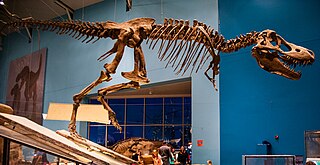
Tarbosaurus is a genus of tyrannosaurine theropod dinosaur that lived in Asia about 70 million years ago, during the Maastrichtian age at the end of the Late Cretaceous period, considered to contain a single known species: Tarbosaurus bataar. Fossils have been recovered from the Nemegt Formation of Mongolia, with more fragmentary remains found further afield in the Subashi Formation of China.

Giganotosaurus is a genus of theropod dinosaur that lived in what is now Argentina, during the early Cenomanian age of the Late Cretaceous period, approximately 99.6 to 95 million years ago. The holotype specimen was discovered in the Candeleros Formation of Patagonia in 1993 and is almost 70% complete. The animal was named Giganotosaurus carolinii in 1995; the genus name translates to "giant southern lizard", and the specific name honors the discoverer, Ruben Carolini. A dentary bone, a tooth, and some tracks, discovered before the holotype, were later assigned to this animal. The genus attracted much interest and became part of a scientific debate about the maximum sizes of theropod dinosaurs.
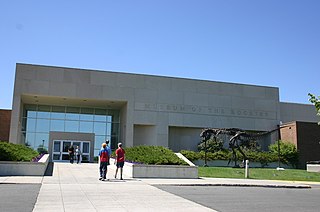
Museum of the Rockies is a museum in Bozeman, Montana. Originally affiliated with Montana State University in Bozeman, and now also, the Smithsonian Institution. The museum is largely known for its Paleontological collections as well as having the largest collection of North American Dinosaur fossils in the United States. They also possess the largest Tyrannosaurus skull ever discovered, as well as the thigh bone of a Tyrannosaurus Rex that contains soft-tissue remains. The museum is part of the Montana Dinosaur Trail and is Montana's official repository for Paleontological specimens.
Susan Hendrickson is an American explorer and fossil collector. Hendrickson is best known for her discovery of the remains of a Tyrannosaurus rex in South Dakota on August 12, 1990, in the Cheyenne River Reservation. Her discovery is the most complete skeleton of Tyrannosaurus known to science. This skeleton is now known as "Sue" in honor of her. It is on display at the Field Museum in Chicago, Illinois. She has also found other important fossils and artifacts around the world.

Sue is the nickname given to FMNH PR 2081, which is one of the largest, most extensive, and best preserved Tyrannosaurus rex specimens ever found, at over 90 percent recovered by bulk. FMNH PR 2081 was discovered on August 12, 1990, by American explorer and fossil collector Sue Hendrickson, and was named after her.

"Stan", also known by its inventory number BHI 3033, is a Tyrannosaurus rex fossil found in the Hell Creek Formation in South Dakota, just outside of Buffalo in 1987, and excavated in 1992. It is the fifth most complete T. rex fossil discovered to date, at more than 70% bulk. In October 2020, the fossil was sold for $31.8 million at auction, making it the most expensive dinosaur specimen and fossil ever sold. In March 2022 Abu Dhabi's Department of Culture and Tourism stated that they had acquired Stan and were planning on displaying the fossil at a new museum of natural history scheduled to open in 2025.

Tyrannosaurus is one of the most iconic dinosaurs and is known from numerous specimens, some of which have individually acquired notability due to their scientific significance and media coverage.

The Black Hills Institute of Geological Research, Inc. (BHI) is a private corporation specializing in the excavation and preparation of fossils, as well as the sale of both original fossil material and museum-quality replicas. Founded in 1974 and based in Hill City, South Dakota, the company is most famous for excavating and selling replicas of some of the most complete specimens of Tyrannosaurus rex, including "Sue", "Stan" and "Trix".
Valley of the T. rex is a Discovery Channel documentary, featuring paleontologist Jack Horner, that aired on September 10, 2001. The program shows Horner with his digging team as they travel to Hell Creek Formation in search for dinosaur fossils, while also following Horner as he presents his view of the theropod dinosaur Tyrannosaurus rex as a scavenger rather than a predator, as it is often portrayed in popular culture.
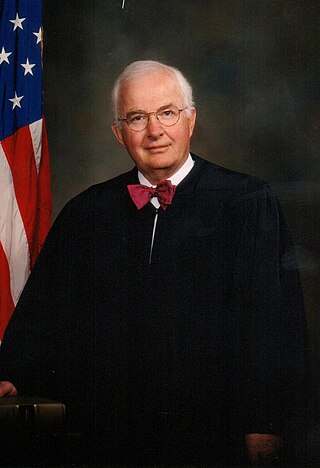
Richard Howard Battey was a United States district judge of the United States District Court for the District of South Dakota.
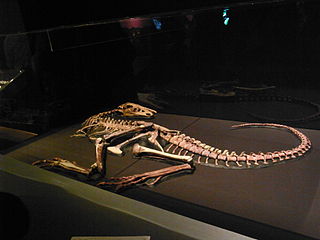
Raptorex is a potentially dubious genus of tyrannosaurid dinosaur. Its fossil remains consist of a single juvenile specimen probably uncovered in Mongolia, or possibly northeastern China. The type species is R. kriegsteini, described in 2009 by Sereno and colleagues. The genus name is derived from Latin raptor, "robber", and rex, "king". The specific name honours Roman Kriegstein, a survivor of the Holocaust, whose son Henry Kriegstein donated the specimen to the University of Chicago for scientific study.

The fossil trade is the purchase and sale of fossils. This is at times done illegally with stolen fossils, and important scientific specimens are lost each year. The trade is lucrative, and many celebrities collect fossils.
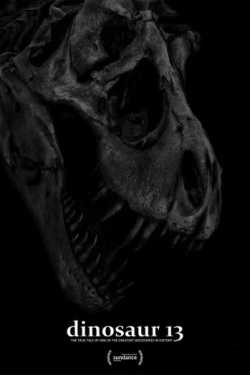
Dinosaur 13 is a 2014 American documentary film directed and produced by Todd Douglas Miller. The film premiered in competition category of U.S. Documentary Competition program at the 2014 Sundance Film Festival on January 16, 2014.

United States v. One Tyrannosaurus Bataar Skeleton (1:13−cv−00857) is a 2013 United States District Court for the Southern District of New York judgment regarding a requested order from the United States government to seize an imported Mongolian Tarbosaurus skeleton related to smuggling law and the applicability of Mongolian law in the United States.

Trix is a Tyrannosaurus rex specimen excavated in 2013 in Montana, United States by a team of paleontologists from the Naturalis Biodiversity Center in Leiden, the Netherlands and Black Hills institute of Geological Research in South Dakota. This Tyrannosaurus, over thirty years old – the oldest known Tyrannosaurus specimen – lived about 67 million years ago. It is considered to be the third most complete Tyrannosaurus found, with between 78% and 80% of its bone volume recovered. The specimen was named Trix after the former Queen Beatrix of the Netherlands. It is one of only two Tyrannosaurus specimens on permanent exhibit in mainland Europe. The other one is a specimen named Tristan on exhibit at the Natural History Museum of Berlin.

Big John is a fossilized Triceratops horridus skeleton discovered in South Dakota's Hell Creek geological formation in 2014. It is the largest known Triceratops skeleton, according to the team that assembled the fossil. Big John's 2021 auction price of €6.6 million made it the most expensive Triceratops skeleton; its high price signaled increasing demand for dinosaur fossils among private collectors and prompted discussion about the drawbacks of private fossil ownership for scientific research.

Titus is an obsidian black skeleton of a Tyrannosaurus rex discovered in the Hell Creek Formation, Montana, United States in 2014 and excavated in 2018.

Scotty is the nickname for the Tyrannosaurus rex fossil, catalogued as RSM P2523.8, that was discovered in Saskatchewan, Canada in 1991. The fossilised remains were painstakingly removed, almost completely by hand, over two decades from the rock in which they were embedded. When the preparation was complete in 2011, a ~65% complete T. rex skeleton was revealed.

















